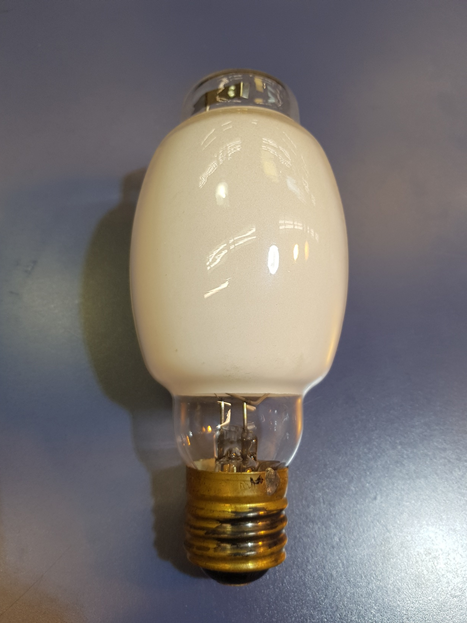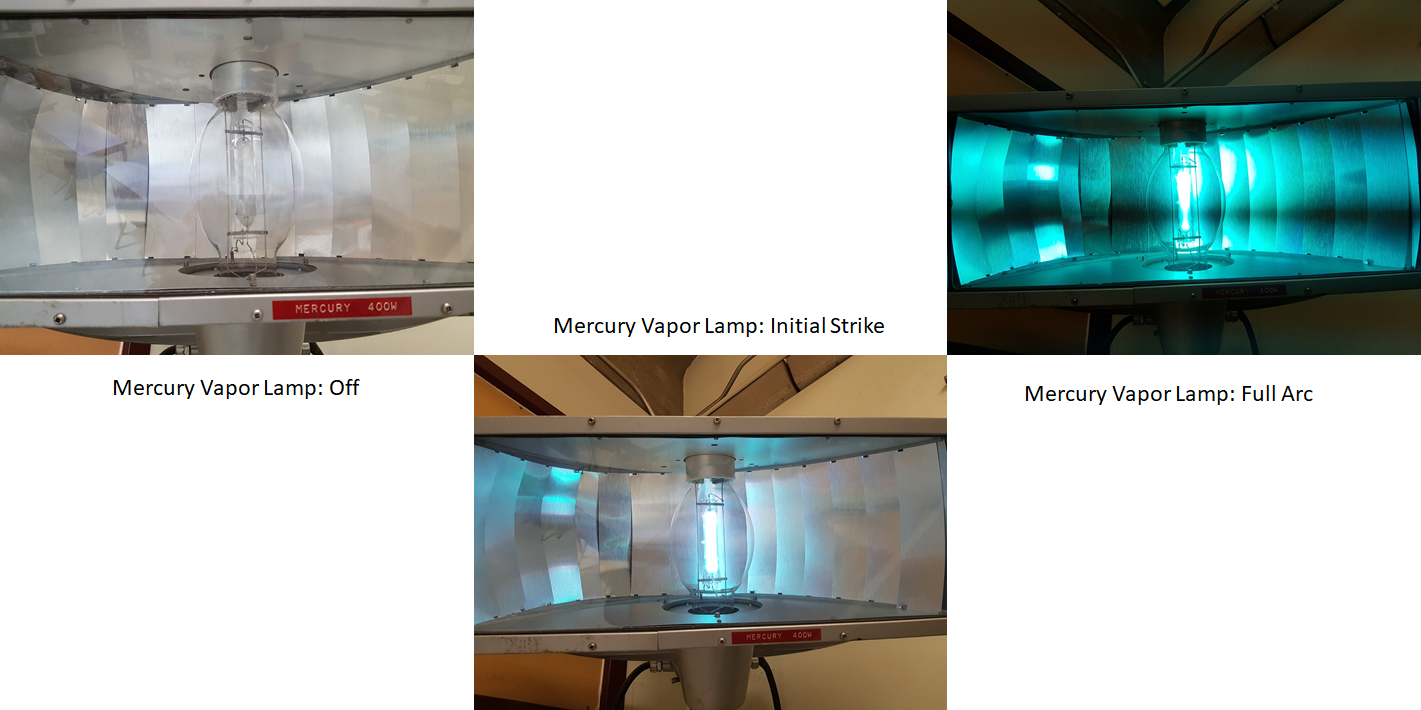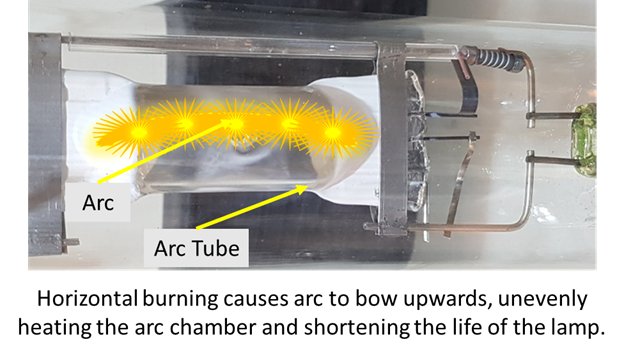31 Mercury Vapor Lamps
Developed in 1934, the mercury vapor lamp is the oldest of the HID light sources. Though largely replaced in recent years, it is still found in many older installations.

The mercury vapor lamp creates visible light directly in its arc tube, which is only a few centimetres long, when compared to the arc tube of a standard four foot fluorescent lamp. It has its main electrodes at either end of the arc tube, but also a smaller starting electrode on the same side as the first main electrode.
In operation, a ballast is needed to impress the high starting voltage across the main electrodes, and between the starting and main electrodes.
The arc tube and its support pieces are all contained in an outer glass envelope, which will block any stray UV radiation emitted from the arc tube. Be aware that if the outer envelope is broken, the lamp may continue to operate, but will no longer be filtering dangerous levels of UV light.
When the switch is first turned on, a small arc is struck between the lower main electrode and the starting electrode. This small arc helps vaporize the mercury gas and increases the pressure and temperature inside the arc tube until the main arc is established, with the whole strike-up time taking between three to seven minutes to reach full light output.

Due to the high pressure inside the arc tube, if a power outage occurs for even an instant and the arc is extinguished, it will not re-strike until the lamp cools and the pressure is reduced. This re-strike time is typically anywhere from four to six minutes.
The efficacy of mercury vapor lamps is in the 30 to 65 lumens/watt range, with the higher ratings for lamps with higher wattages. While they are not the most efficient of HID light sources, mercury vapor lamps are, however, the longest lasting, with an average rated life of 24,000 hours and up.
The color temperature of a clear lamp is bluish-white in the 6,000°K range, while many lamps have a supplementary phosphor coating which improves the color rendition by converting some of the higher frequency radiation into visible light in the red region, thus giving them a warmer appearance in the 3000°K region. If the outer envelope of this lamp is damaged, the arc tube could still operate and be emitting dangerous levels of unfiltered UV radiation. Care must be taken to deenergize and replace these lamps as soon as possible.

These lamps are generally designed for universal burning but are normally more efficient when operated vertically than horizontally. This is because the arc will bow upwards inside the tube. If the lamp is installed horizontally, it can cause excess heating of one side of the arc tube, which can lead to early failure.

